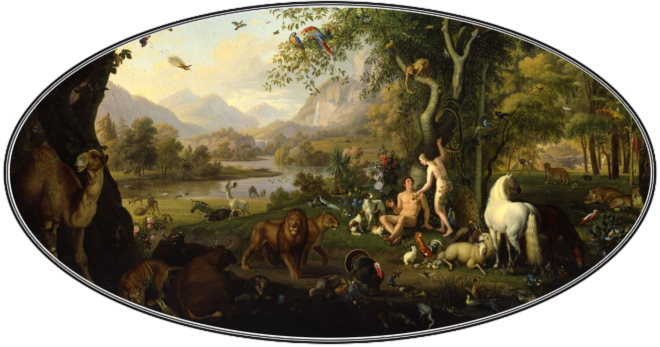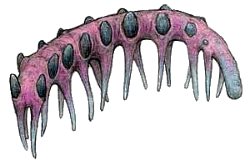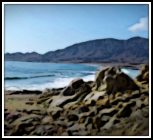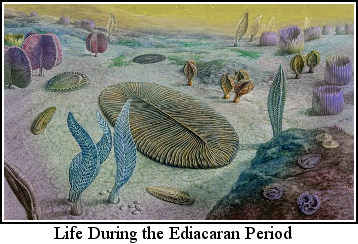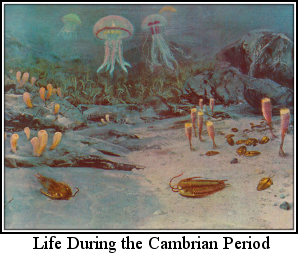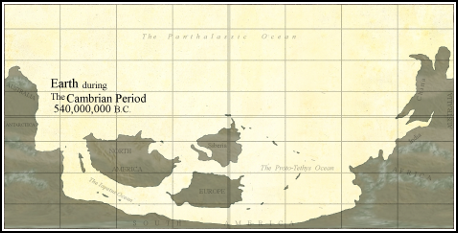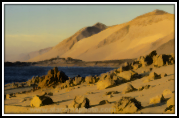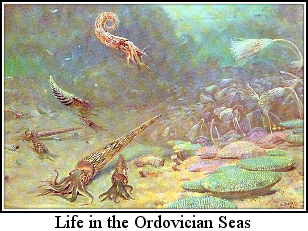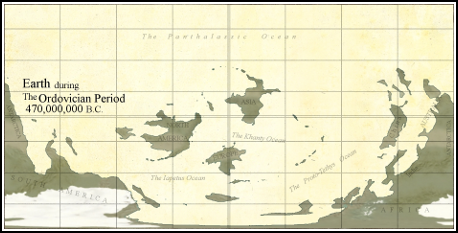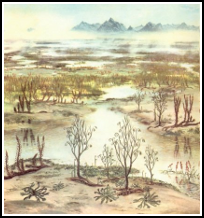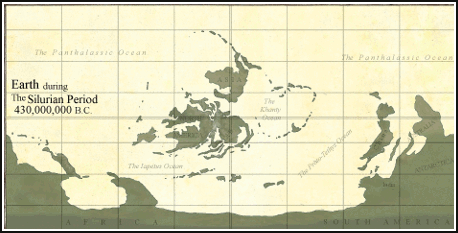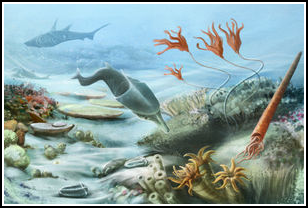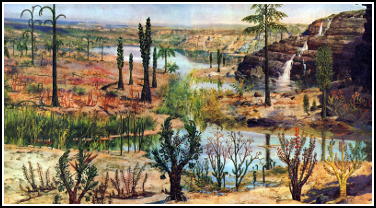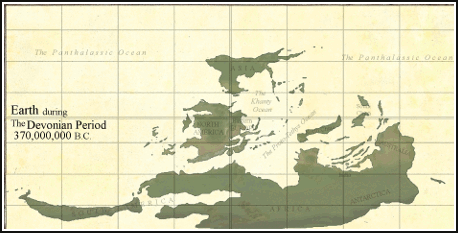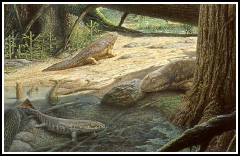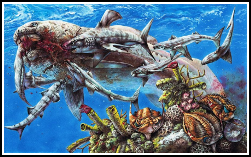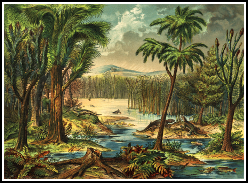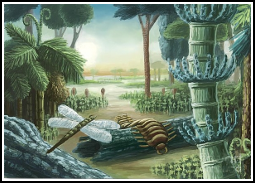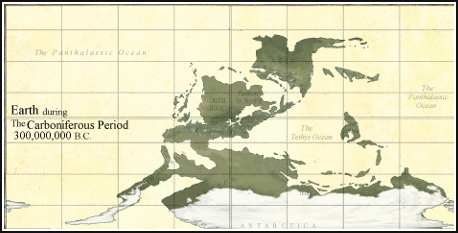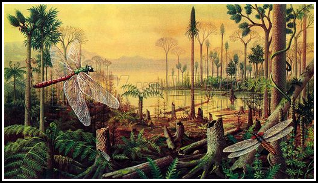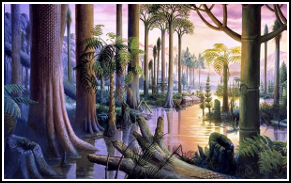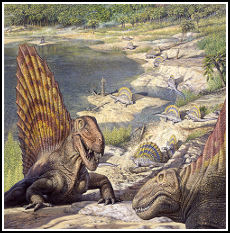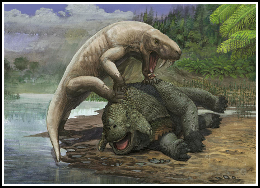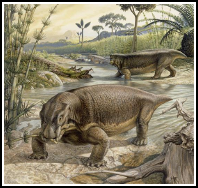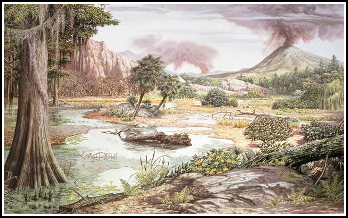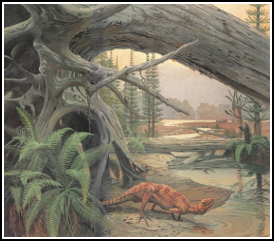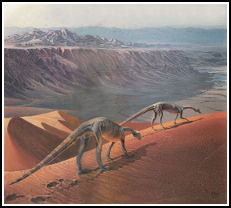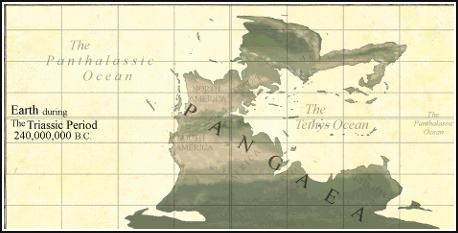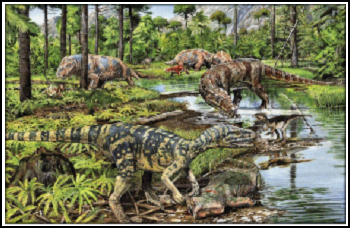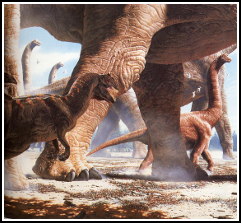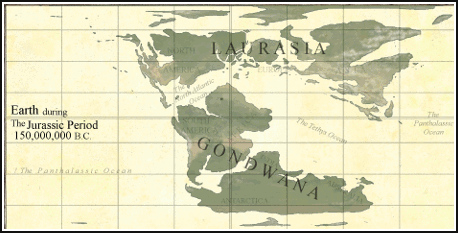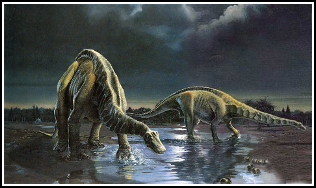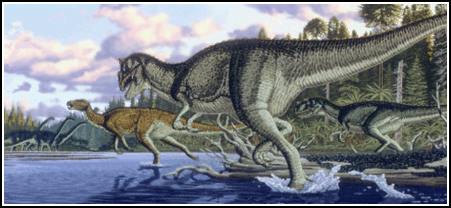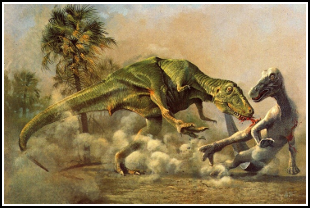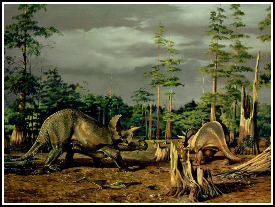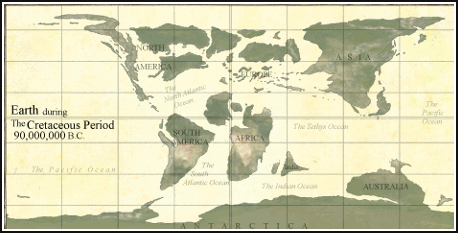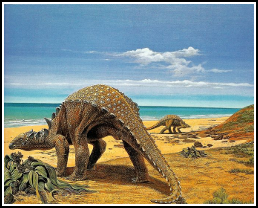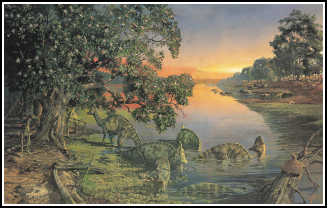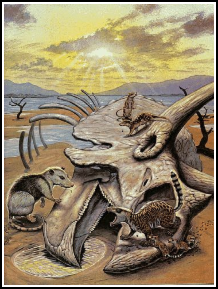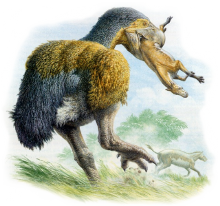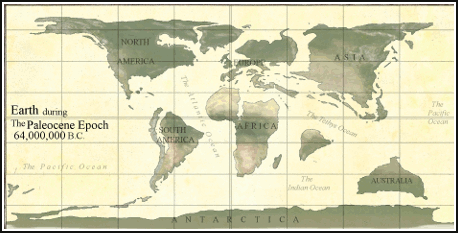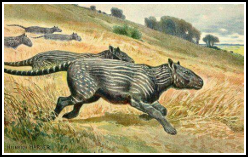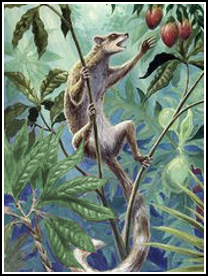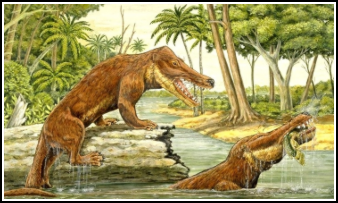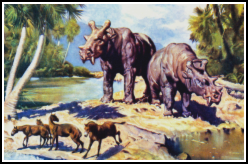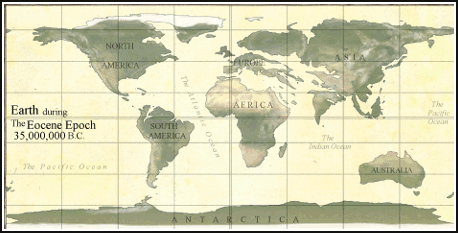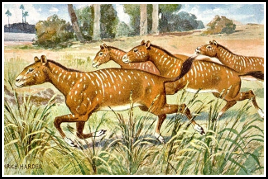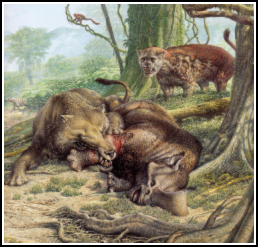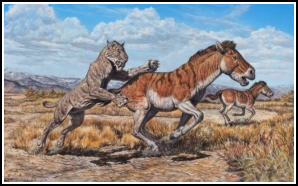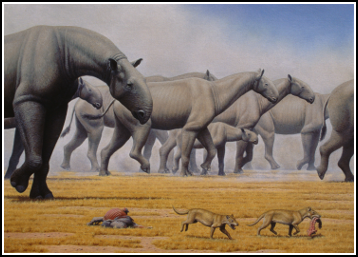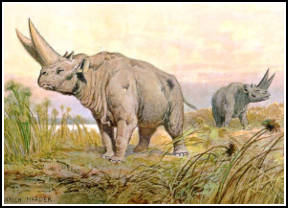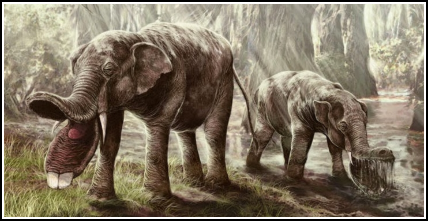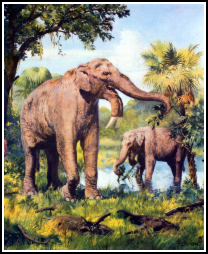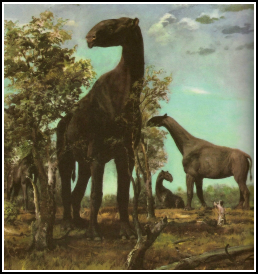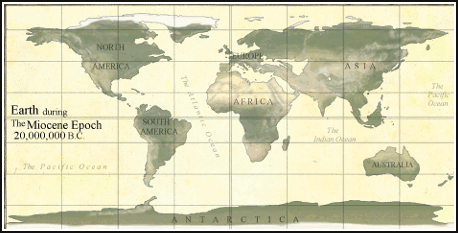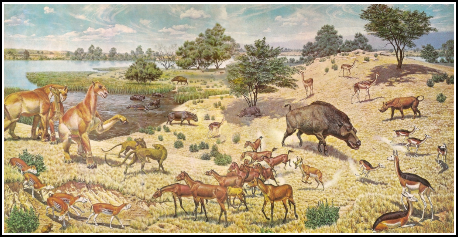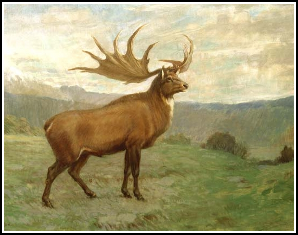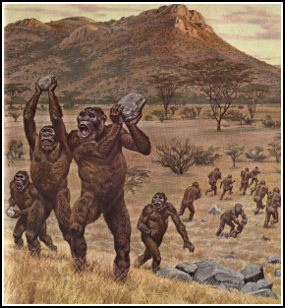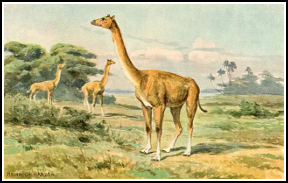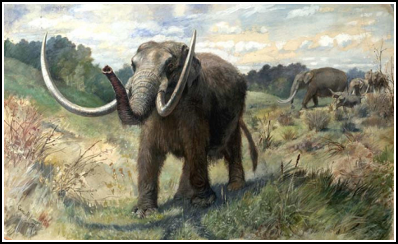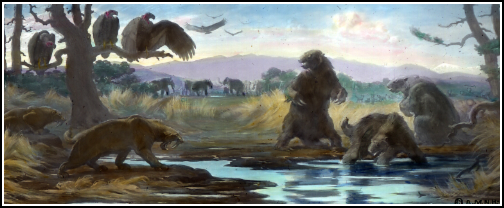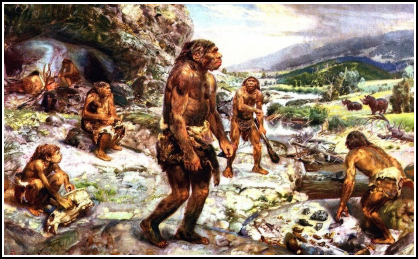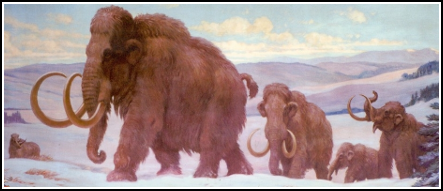CHAPTER ONE:
From Creation to the Dawn of History
13,730 Million years ago to 4004 BC
IN THE BEGINNING...
13,729,998,016 BC
July 4: The Big Bang
The Universe is created from an infintesimally small point in a blinding flash of light!
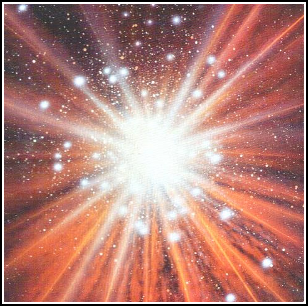
13,729,998,016-c.13,729,621,000 BC
The Eon of Chaos
For the first 377,000 years after the Big Bang, the entire Universe, much smaller than it is today, exists as a hot, opaque mass of swirling protons and photons and shit.
c.13,729,600,000-13,200,000,000 BC
The Eon of Darkness
The Universe continues to expand and the hot, opaque mass of superheated particles clears up. And with no stars yet created and the light of the Big Bang fading, the Universe grows cold and darkness spreads across the faces of the deep...
c.13,575,000,000 BC
The First Stars are Created, Ď...and there was lightí.
c.13,200,000,000-8,000,000,000 BC
The stars and dust in the heavens gather together and the first galaxies appear.
c.8,300,000,000 BC
Our Galaxy, the Milky Way, is Created.
c.4,680,000,000-4,532,000,000 BC
The Chaotian Eon
The Formation of the Solar System
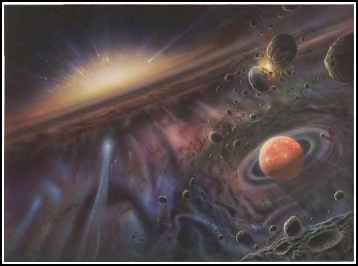
c.4,680,000,000-4,630,000,000 BC
The Nephelean Period
A massive nebula in the middle rim of the Milky Way Galaxy begins to collapse and form dozens of proto-stars, one of which is destined to become our own Sun.
c.4,630,000,000-4,568,000,000 BC
The Erebrean Period
The ball of gas which is our proto-sun continues to collapse under itís own gravity, growing ever hotter, all the while slowly drifting away from itís sister suns and the great nebula of itís birth.
4,568,276,145 BC
The Sun is Created
Nuclear Fusion is sparked in itís heart and our Sun shines itís first light.
c.4,568,000,000-4,560,000,000 BC
The Hyperitian Period
Our newly born sun continues to collapse under itís own gravity, growing ever brighter as a vast disc of dust and gas begins to form around it.
c.4,560,000,000-4,533,000,000 BC
The Titanomachean Period
The vast disc of dust and gas surrounding our newborn Sun begins to coalesce into balls of rock and dust which themselves collide forming asteroids and proto-planets. These then collide in incredibly violent collisions forming bigger and bigger proto-planets until, finally, the Solar System close to what we know it today is formed.
c.4,540,000,000 BC
The proto-planets Tellus and Theia form from a disc of dust and rocks in what will become the orbit of the Earth.
4,532,788,009 BC
The Earth is Created
April 22: The proto-planet Theia collides with Tellus. Both are destroyed in a catalclysmic fury of fire and rock and the Earth and the Moon form from the debris.
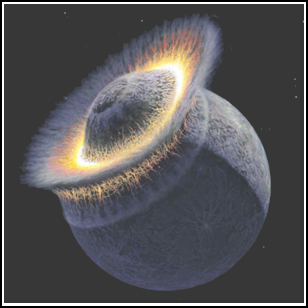
The Hadean Eon
c.4,532,000,000-3,810,000,000 BC
The First Age of Planet Earth
c.4,532,000,000-4,404,000,000 BC
The Hephaestean Period
For the first forty million years after the collision of the proto-planets Tellus and Theia forged the Earth and the Moon, both these globes exist as violent, molten worlds of magma.
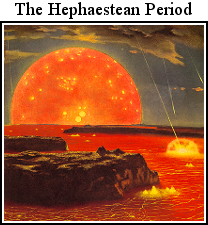
c.4,404,000,000-4,235,000,000 BC
The Jacobean Period
The crust of the Earth has solidified into solid stone and gas and steam spew out of great volcanoes and immense cracks in the surface creating Earthís first atmosphere. This first atmosphere is much thicker and more toxic than todayís, and this early Earth resembles a thick cloud covered Venusian hot-house.
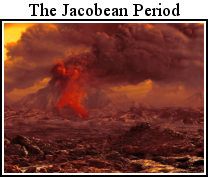
c.4,234,820,000-4,234,780,000 BC
The First Oceans Form
As the Earth cools itís dense, steamy early atmosphere begins to condense and torrential rains fall upon itís surface continuously for forty thousand years.
c.4,234,000,000-4,050,000,000 BC
The Procrustean Period
For the next eighty million years or so, the still life-less Earth settles into what seems to be itís final form. Oceans cover itís entire surface and the still dense, toxic atmosphere clouds the sun.
At this point there are 563 days in the year as each day is only 15Ĺ hours long.
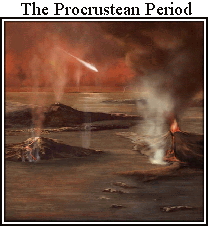
The Archaeozoic Eon
c.4,050,000,000-2,400,000,000 BC
c.4,050,000,000-3,810,000,000 BC
The Promethean Bombardment
After seemingly settling into itís final form, the Earth is rocked again as the outer planets shift in their orbits and hurtle millions of asteroids towards the inner Solar System.
For over two hundred million years, the Earth is bombarded with thousands of asteroids. The first oceans are vaporised and the surface is re-shaped again.
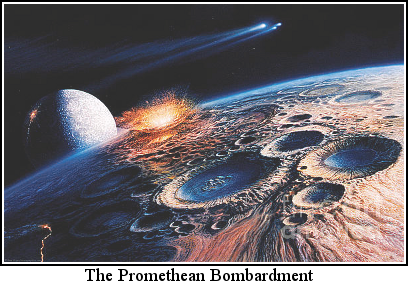
c.4,026,000,000 BC
Life on Earth is Created
Bubbling from the molecules of the primordial soup, the first living organisms evolve, much simpler than any known in our world today.

c.3,810,000,000-3,490,000,000 BC
The Paleoarchaean Era
As the bombardment of asteroids of the Promethean Period die off, the oceans form again and the first chains of volcanic islands rise from the seas.
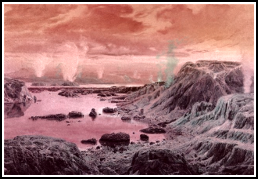
c.3,650,000,000 BC
The First Continent is Formed
The Earthís tectonic motion pushes a chain of islands (that will one day form parts of Africa and Australia) together into one place, forming Vaalbara, the first continent.
c.3,490,000,000-2,780,000,000 BC
The Mesoarchaean Era
As the Archaeozoic Eon drags on, Life on Earth proliferates across the world, evolving into simple one-celled organisms such as bacteria. Meanwhile, the continent Vaalbara continues to grow as it slowly accumulates land over the geologic ages.
For the next few billion years the Earth will remain relatively unchanged. Life in the oceans will slowly evolve but the land will remain a barren desert and the atmosphere unbreathable to modern humans.
c.3,460,000,000 BC
The first bacteria evolve.
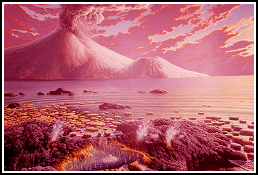
c.3,100,000,000 BC
Ur, Earthís second continent is formed in the southern hemisphere.
c.2,950,000,000-2,920,000,000 BC
The Pongola Ice Age
c.2,800,000,000 BC
On the far side of the Galaxy: The mysterious Elder Race builds superstructures on the planet Arzeama (but nevermind this odd fact, I really donít know anything else about it).
c.2,800,000,000-2,500,000,000 BC
The Neoarchaean Era
As Life evolves and proliferates throughout the seas, the oceans, for a time, turn green. The simple life of the planet continues to slowly evolve forming stromatalites, rock-like collections of microorganisms on jutting out of the water along the coasts. Meanwhile, thick microbial mats form on the ocean floors and certain new breeds of microorganisms slowly begin to introduce a new gas to the atmosphere: oxygen.
c.2,560,000,000 BC
Kenorland, the largest continent to date, is formed.
c.2,470,000,000 BC
The large continent Kenorland breaks up.
The Proterozoic Eon
c.2,420,000,000-542,000,000 BC
c.2,420,000,000-1,780,000,000 BC
The Paleoproterozoic Era
c.2,420,000,000-2,250,000,000 BC
The Siderian Period
The Age of the Great Oxygen Catastrophe
New species of cyanobacteria evolve in the seas spewing out copious amounts of oxygen into the atmosphere. Ironically, this precious gas which most modern life on Earth cannot live without is poisonous to the majority of the microscopic life of this ancient time, and many go extinct.
c.2,350,000,000-2,100,000,000 BC
The Huronian Ice Age
c.2,250,000,000-2,060,000,000 BC
The Rhyacian Period
A period beginning with one of the greatest ice ages the Earth has ever seen. Snow and ice cover the lands, even in the tropics.
Later in the period, as the ice melts, the first multicellular life begins to form, although still simple and microscopic.
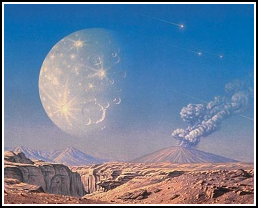
c.2,100,000,000 BC
Algae evolves in the seas, the first forms of multicellular life on Earth.
c.2,060,000,000-1,850,000,000 BC
The Orosirian Period
A period which saw Life evolve into the first eukaryotes. Complex single-celled lifeforms which were the ancestors of all modern plants, fungi, and animals.
2,023,490,760 BC
A large asteroid collides with Earth.
1,850,020,534 BC
Another large asteroid collides with Earth.
c.1,820,000,000 BC
The Earthís first array of continents assemble together to form the first supercontinent: Kolumbia.
c.1,780,000,000-850,000,000 BC
The Mesoproterozoic Era
ďThe Boring BillionĒ
Quite possibly the most stable era in the History of Earth. A period of nearly a billion years in which nothing significant happens on land or on sea.
However, it shall prove to be the last era before changes take shape which will forever alter the face of the planet...
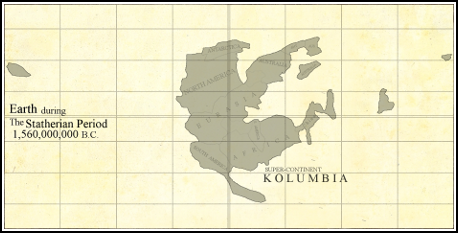
c.1,780,000,000-1,500,000,000 BC
The Statherian Period
The first of five, very boring periods on Earth
At this point there are 450 days in the year as each day is only 20 hours long.
c.1,500,000,000-1,400,000,000 BC
The Calymmian Period
A period in which nothing much happens.
c.1,400,000,000-1,200,000,000 BC
The Ectasian Period
A period which saw the eukaryotes evolve into the first multicellular form of plant life, and the first forms of life to reproduce sexually, breaking up the monotony of the ďBoring BillionĒ.
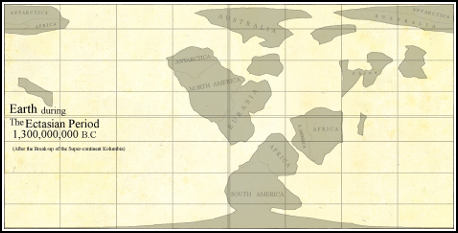
c.1,350,000,000 BC
The supercontinent Kolumbia begins to break up.
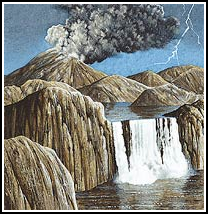
c.1,200,000,000 BC
Mother Earth gets her cherry popped (organisms evolve sexual reproduction).
c.1,200,000,000-1,000,000,000 BC
The Stenian Period
A period which saw the rise of the supercontinent Rodinia and not much else.
c.1,060,000,000 BC
The long dispersed remnants of Kolumbia reassemble and the supercontinent of Rodinia is formed.
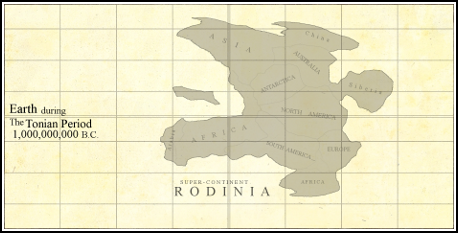
c.1,000,000,000-850,000,000 BC
The Tonian Period
The last period of the Mesoproterozoic Era.
After existing for eons as a barren world with microscopic life evolving imperceptably in the seas, Earth will soon experience changes which will transform it into the lush, life covered world that we know today...
c.980,000,000 BC
The supercontinent Rodinia begins to break up.
c.850,000,000-542,000,000 BC
The Neoproterozoic Era
c.850,000,000-635,000,000 BC
The Cryogenian Period
As the Proterozoic Eon winds to an end, a series of ice ages descends upon the Earth, the likes of which has never and will never be seen again. Glaciers, miles deep, cover the entire surface of the globe, from the Arctic to the Equator.
Life is put to itís ultimate test.

c.750,000,000-700,000,000 BC
The Sturtian Ice Age
The first of two great ice ages when the Earth was completely covered in snow and glaciers.
c.725,000,000 BC
The supercontinent Pannotia forms from the remnants of Rodinia.
c.660,000,000-635,000,000 BC
The Varanger Ice Age
The second of Earthís great global ice ages.
c.635,000,000-542,000,000 BC
The Ediacaran Period

As the Earth, once again, warms up after the great, global ice ages of the Cryogenian Period, the worldís first ecosystem of complex, macroscopic lifeforms emerge. Living on the still remaining thick mat of microbial life, these creatures are neither plant, animal or fungi and are like nothing on Earth today.
At the end of the period, for mysterious reasons, these strange and unearthly creatures and the microbial mats they live on go extinct.
c.575,000,000 BC
The supercontinent Pannotia begins to break up.
The Paleozoic Era
c.542,000,000-252,000,000 BC
The Cambrian Period
c.542,000,000-488,300,000 BC

At this point there are 383 days in the year as each day is less than 23 hours long.
c.542,000,000 BC
The Cambrian Explosion
Life on Earth, which for billions of years had been limited to simple microscopic organisms, suddenly and inexplicably begins to evolve and diversify into large complex creatures, such as those that fill the Earth today.
c.535,000,000 BC
The first trilobites and other arthropods emerge.
c.530,000,000 BC
The first fish evolve from earlier worm-like creatures.
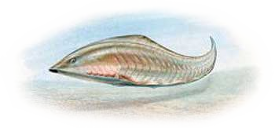
c.510,000,000 BC
The first cephalopods (octupus and squid and shit) emerge.
The Ordovician Period
c.488,300,000-443,700,000 BC

c.480,000,000 BC
The first plants begin to grow on the land.
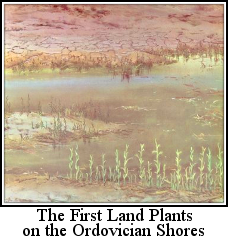
c.450,000,000 BC
Bugs begin to crawl onto the land.
c.449,000,000-441,000,000 BC
The Ordovician Ice Age
443,740,935 BC
The Ordovician Extinction Event
A great supernova one thousand light-years away, floods the already ice age afflicted Earth with lethal gamma rays causing one of the great extinction events of her history.
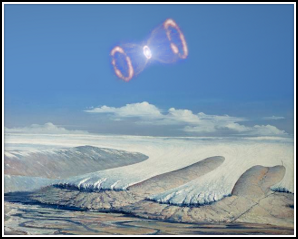
The Silurian Period
c.443,700,000-416,000,000 BC

c.430,000,000 BC
The first jawed fish evolve.
c.420,000,000 BC
The earliest sharks emerge.
The Devonian Period
c.416,000,000-359,200,000 BC
The Age of Fish

c.385,000,000 BC
The first forests grow across the land.
c.380,000,000 BC
The first spiders and centipedes and shit.
c.375,000,000 BC
The first amphibians evolve from the fish...
... and Animals Crawl Onto Dry Land
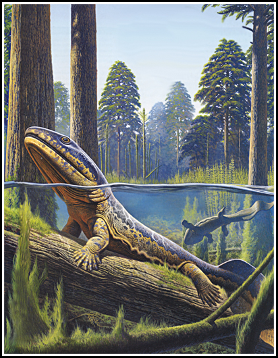
c.372,000,000 BC
The Late Devonian Extinction Event
The Carboniferous Period
c.359,200,000-299,000,000 BC
The Age of Amphibians

c.345,000,000 BC
The first winged insects evolve.
c.330,000,000 BC
The first reptiles evolve from the amphibians.

c.310,000,000 BC
Mammal-like reptiles begin to evolve from the reptiles.

c.300,000,000 BC
The ancient Paleozoic continents combine to form the super-continent of Pangaea.
The Permian Period
c.299,00,000-252,281,000 BC
The Age of Mammal-like Reptiles

c.290,000,000 BC
The first frogs and salamanders emerge.
c.275,000,000 BC
The therapsids (proto-mammals) evolve from the mammal-like reptiles of the past. They come to dominate the rest of the period.
c.252,281,000 BC
The Great Dying
Caused by the great volcanos of the Siberian Traps, 95% of all life on Earth perishes and Earth is left a barren wasteland.
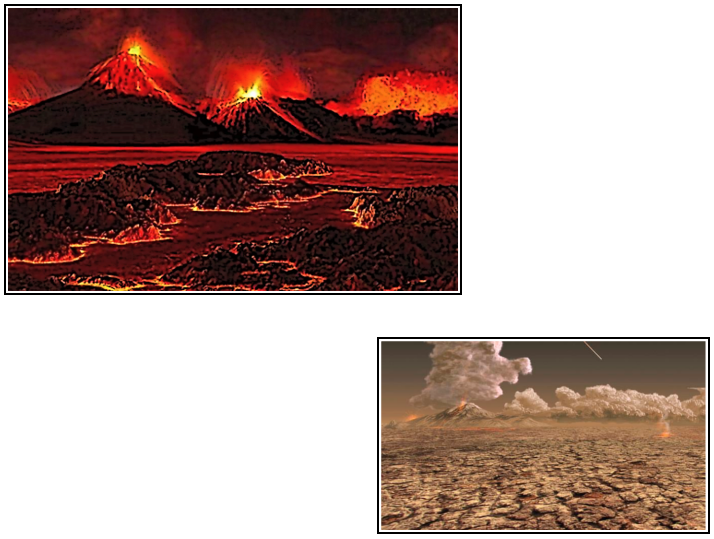
The Mesozoic Era
c.252,000,000-65,500,000 BC
The Age of Dinosaurs
The Triassic Period
c.252,281,000-199,600,000 BC

c.225,000,000 BC
The first dinosaurs evolve.
c.220,000,000 BC
The first turtles emerge from their shells.
c.215,000,000 BC
The first mammals evolve from the mammal-like reptiles. They remain as small rodents until the end of the Age of Dinosaurs.

199,600,003 BC
The Triassic Extinction Event
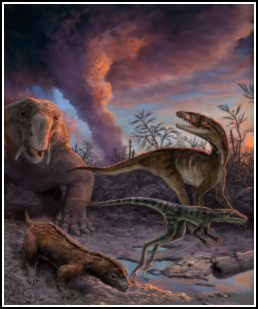
The Jurassic Period
c.199,600,000-145,500,000 BC

c.180,000,000 BC
The super-continent Pangaea begins to split into what will become the continents we know today.
c.154,000,000-150,000,000 BC
The long necked Brontosaurus thunders across the Jurassic landscape.
The horny-tailed Stegosaurus walks the Earth.
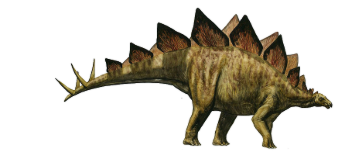
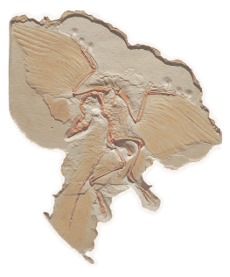
c.150,000,000 BC
The first birds evolve from the dinosaurs.
The Cretaceous Period
c.145,500,000-65,500,000 BC

c.125,000,000 BC
The first flowers begin to bloom.
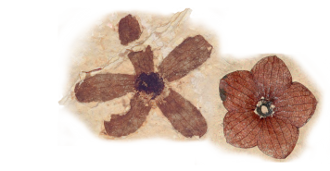
c.75,000,000-71,000,000 BC
The verocious Velociraptor stalks the jungles of the Cretaceous Period.
c.68,000,000 BC
The mighty three-horned Triceratops evolves.
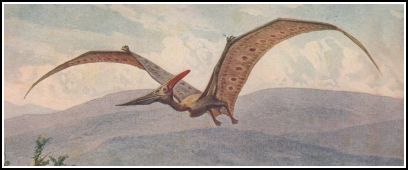
Quatzalcoatlus, the mightiest of the pteradactyls with a fifty foot wingspan, soars over the Cretaceous skies.
c.67,000,000 BC
Tyrannosaurus Rex evolves to rule as King of the Dinosaurs.
65,499,525 BC
The Extinction of the Dinosaurs
A six mile wide comet crashes into what will become Chicxulub, Mexico, heralding the end of the reign of the greatest beasts to ever walk the Earth.
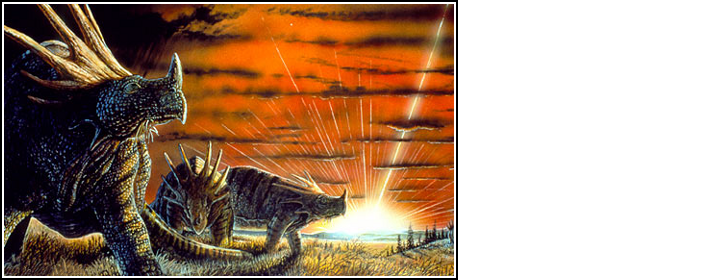
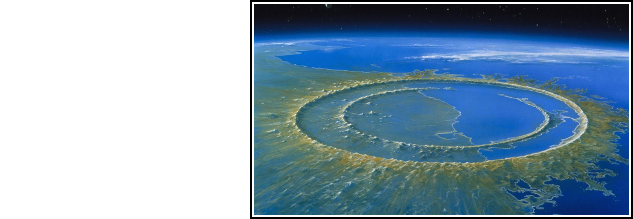
The Cenozoic Era
c.65,500,000 BC- present
The Age of Mammals
The Paleocene Epoch
c.65,499,000-55,800,000 BC
At this point there are 368.3 days in the year as each day is only 23:48 hours long.
c.65,000,000 BC
In the absence of dinosaurs, mammals begin to evolve into the many great and diverse forms we know today.
c.63,000,000 BC
Our earliest primate ancestors evolve.
The Eocene Epoch
c.55,800,000-33,900,000 BC
c.55,500,000-52,000,000 BC
The Great Eocene Global Warming
c.55,000,000 BC
Little, cute horses that get eaten by big, mean birds gallop their way into natural history.
c.45,000,000 BC
The sub-continent of India collides with Asia and begins to push up the Himalayas.
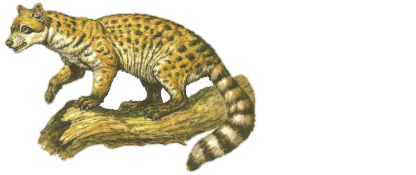
c.40,000,000 BC
The first dogs bark and bite.
c.35,000,000 BC
The first blades of grass sprout from the earth.
The Oligocene Epoch
c.33,900,000-23,030,000 BC
c.30,000,000 BC
Cats make their first meows.
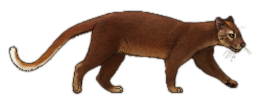
Pigs make their first oinks.

Bears make their first, uh, appearance.
The Miocene Epoch
c.23,030,000-5,330,000 BC
c.20,000,000 BC
The first deer prance through the forests.

The first giraffes stretch their necks.
c.10,000,000 BC
The last common ancestor of man and the great apes stalks the Earth.
c.9,000,000 BC
Gigantopithecus blacki, ancestor of the Sasquatch and the Yeti, evolves in south-east Asia.
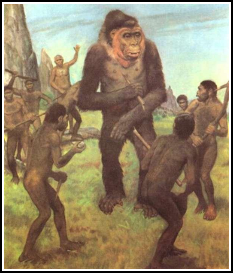
c.6,500,000 BC
The first ape-men come down from the trees and walk upright.
The Pliocene Epoch
c.5,332,000-2,558,000 BC
5,330,348 BC
The Mediterranean Flood
The Atlantic Ocean breaks through the Straits of Gibralter and catastrophically floods the Mediterranean basin which had been dry for over 600,000 years.
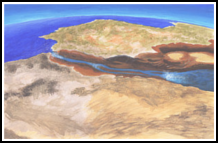
c.4,800,000 BC
Mammoths make their first thunderous appearance.
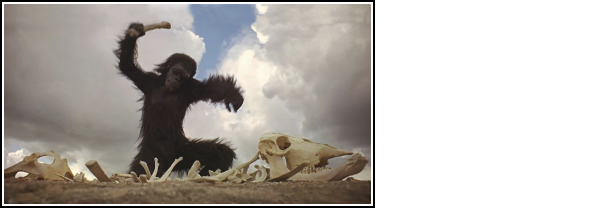
c.3,600,000 BC
Our ancestor, the Australopithecus, evolves in southern Africa from earlier upright ape-men.
c.2,580,000 BC
The first of the latest series of ice ages descends upon the Earth.
The Pleistocene Epoch
c.2,558,000-10,000 BC
c.2,558,000-70,000 BC
The Early Stone Age
c.2,500,000 BC
The arrival of the fearsome saber-toothed tiger.
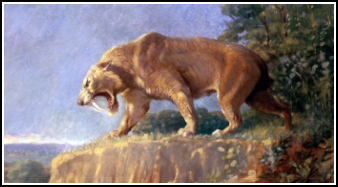
c.2,300,000 BC
Our ancestor, Homo habilis, evolves. The first to implement stone tools.
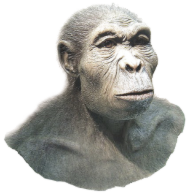
c.1,400,000 BC
Our ancestor, Homo erectus, evolves. The first to tame fire.
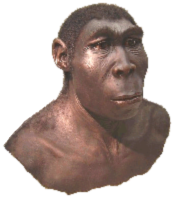
c.700,000 BC
Homo heidelbergensis evolves from Homo erectus, common ancestor to modern humans and the Neanderthal.
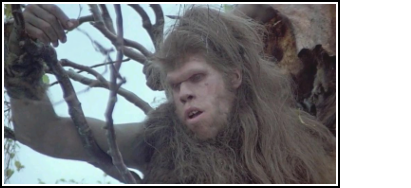
c.400,000 BC
Our cousin, the Neanderthal, evolves in Europe.
c.200,000 BC
The first of our own species, ďArchaicĒ Homo sapiens, evolves in Africa with brains bigger than any ever seen on Earth.

c.130,000-115,000 BC
The last interglacial warm period before the Last Ice Age descends upon the Earth.
c.70,000-9600 BC
The Latter Stone Age
70,004 BC
Mankind is Created
The catacylismic eruption of the Toba Super-Volcano coincides with the births of Kintu and Nambi in Africa, the first human beings to possess a soul.
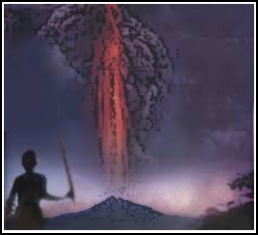
c.45,000 BC
The ancestors of the Aboriginees colonize Australia.
c.35,000 BC
Cro-Magnon cavemen (ancestors of modern Europeans) enter Europe, inhabited already by brutish Neanderthals.
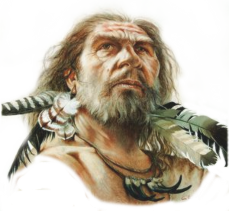
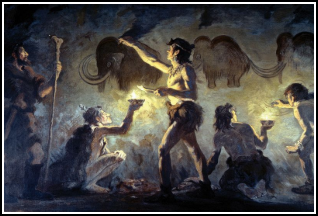
32,657 BC
The Last Neanderthal dies. (Presumably, although modern sightings have been reported in Russia)
c.18,000 BC
The height of the Last Ice Age.
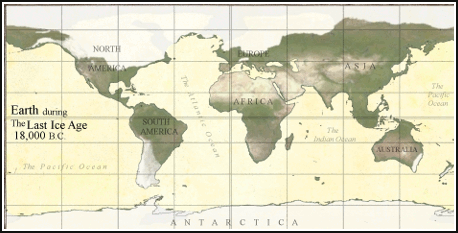
c.12,000 BC
The ancestors of the American Indians follow the mighty mammoth across the Bering Strait into North America.
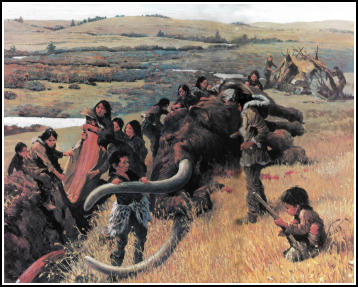
c.10,000 BC
The End of the Last Ice Age.
The mammoth and other pre-historic behemoths go extinct.
The Holocene Epoch
c.10,000 BC-present
9831 BC
The monoliths of GŲbekli Tepe are erected in southern Anatolia.
The Dawn of Civilisation has begun.
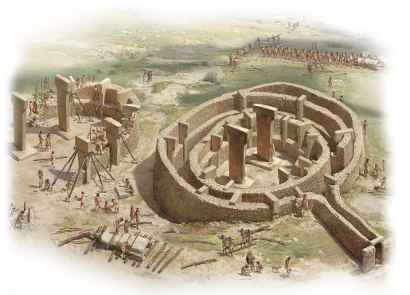
9564 BC
The Fall of Atlantis - according to Plato.
c.9500-7000 BC
The Agricultural Revolution
Man learns to domesticate the animals and tame the soil. And, for the first time in his history, he settles down in villages.

c.9000 BC
Jericho, the oldest city on Earth, is built.
7908 BC
A catastrophic flood caused by the breaching of the great Lake Agassiz carves out the river valley of Fort McMurray.
c.6800 BC
The first walls of Jericho are built.
c.6500 BC
The plough is invented in Mesopotamia.
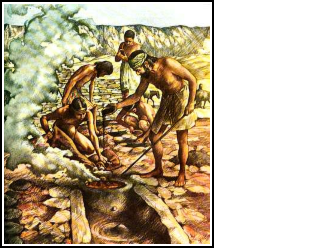
c.6000 BC
Copper comes into use in Mesopotamia.
The first sea worthy ships are built.
c.5200 BC
Sumerian civilisation arises in southern Mesopotamia.
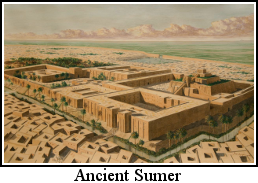
c.4500 BC
The wheel is invented in Mesopotamia.
4004 BC
Adam and Eve, father and mother of the chosen ones, are born in the Garden of Eden.
